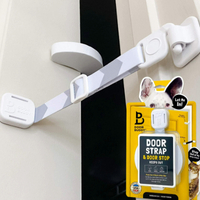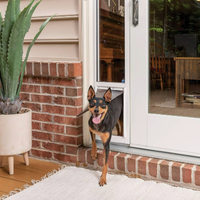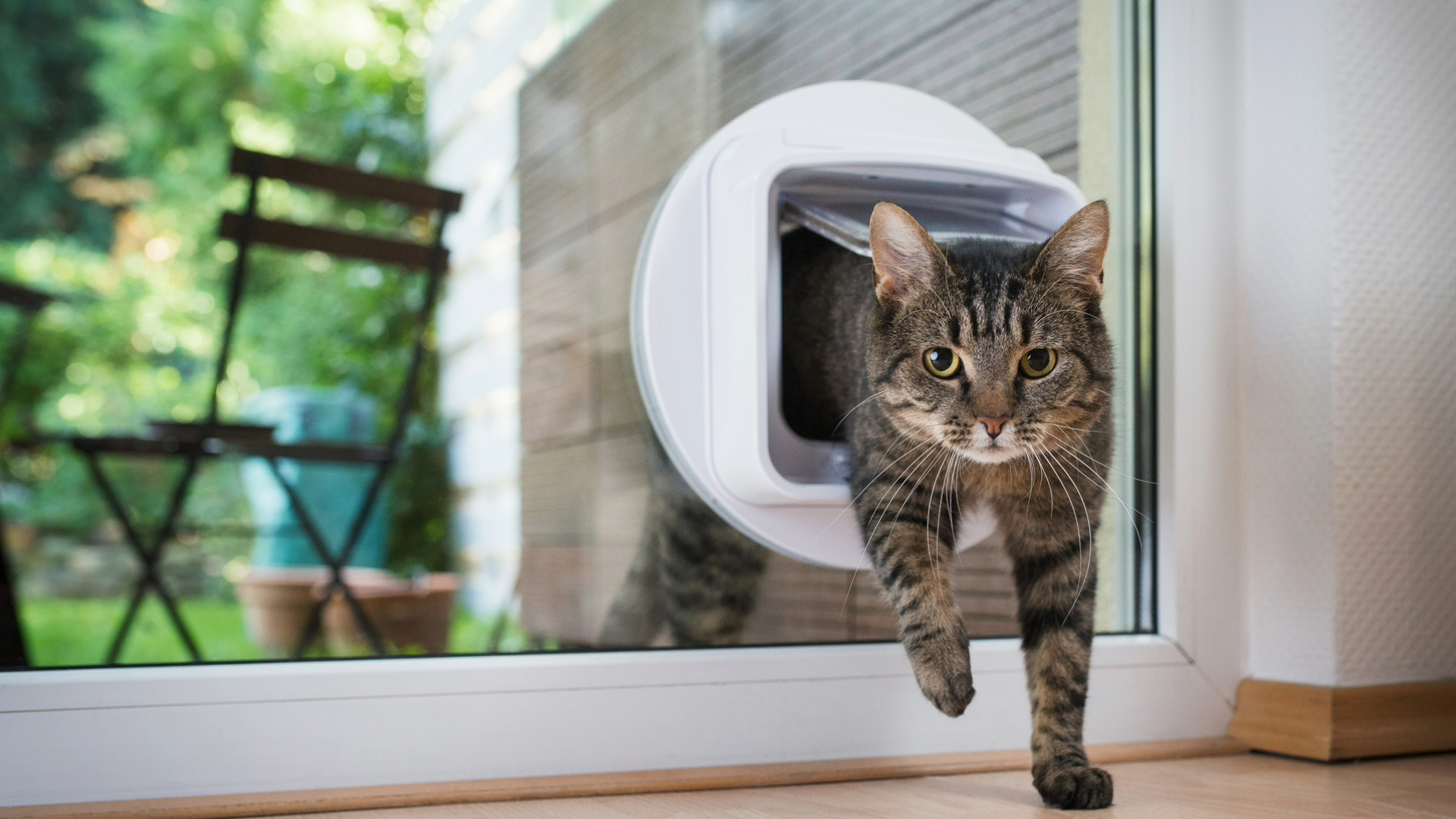
If you live in a rented property or simply don’t want to install a cat flap, cat door alternatives can allow your pet the same freedom, without any permanent damage to your home.
It’s already stressful enough to move house with a cat and when you get there, it can be even more difficult to introduce them to a new environment, both indoors and outdoors. Our guide on how to move house with a cat is a good place to start.
While you can learn how to train a cat to use a cat door, this might not be an option for everybody, so you may need to employ alternative methods to let your cat explore.
Here are some of the best cat door alternatives:
1. Pet door for sliding windows or sash windows
For a horizontal sliding window, you can get a solid or glass panel with a pet door already installed in it that slots into the open window. You will likely need this custom-made to fit your window measurements, but there are lots of companies out there offering this service for a reasonable price.
In comparison to a regular cat flap, the installation of a window-mounted pet door is much easier, with most using the window itself to hold it in place. You can also get some that clip into place. If you have security concerns, you can purchase a lock for sliding windows or window wedges to hold the window closed on the flap panel from the inside, so it cannot fall out of place.
PetsRadar Newsletter
Get the best advice, tips and top tech for your beloved Pets
Depending on what you order, you should be able to get a variety of flap sizes to fit your window and your cat, with the flap working just like a regular one. If you still want to be able to see out of your window, some are made from plexiglass so as not to spoil your view.
Some companies also offer the addition of a microchip cat flap, which allows selective entry to pets who have a chip on their collar, keeping out unwanted guests. Check out our buying guide for the best microchip cat flaps.
Flaps for vertical sliding windows work in a similar way, but instead of using the weight of the window to hold them in place as is the case with a sash or horizontal sliding window, you are more likely to need a window wedge to keep it secure.
2. Pet door for sliding glass door or French windows
Similar to the concept of cat flaps for windows, you can also get them to fit onto sliding glass doors and French windows. Instead of placing them horizontally, these panels fit vertically and are held in place by the siding door. The cat flap is preinstalled at the bottom of the panel, with a variety of options and sizes available.
The downside of this choice is that it might not be as secure or warm as when the doors are fully closed. However, sliding doors are usually more standardized sizes than windows, so you are more likely to find retailers selling pre-made options, rather than commissioning someone to build a custom door for you. Many of them come with the option of locks for the sliding doors and the pet door itself.
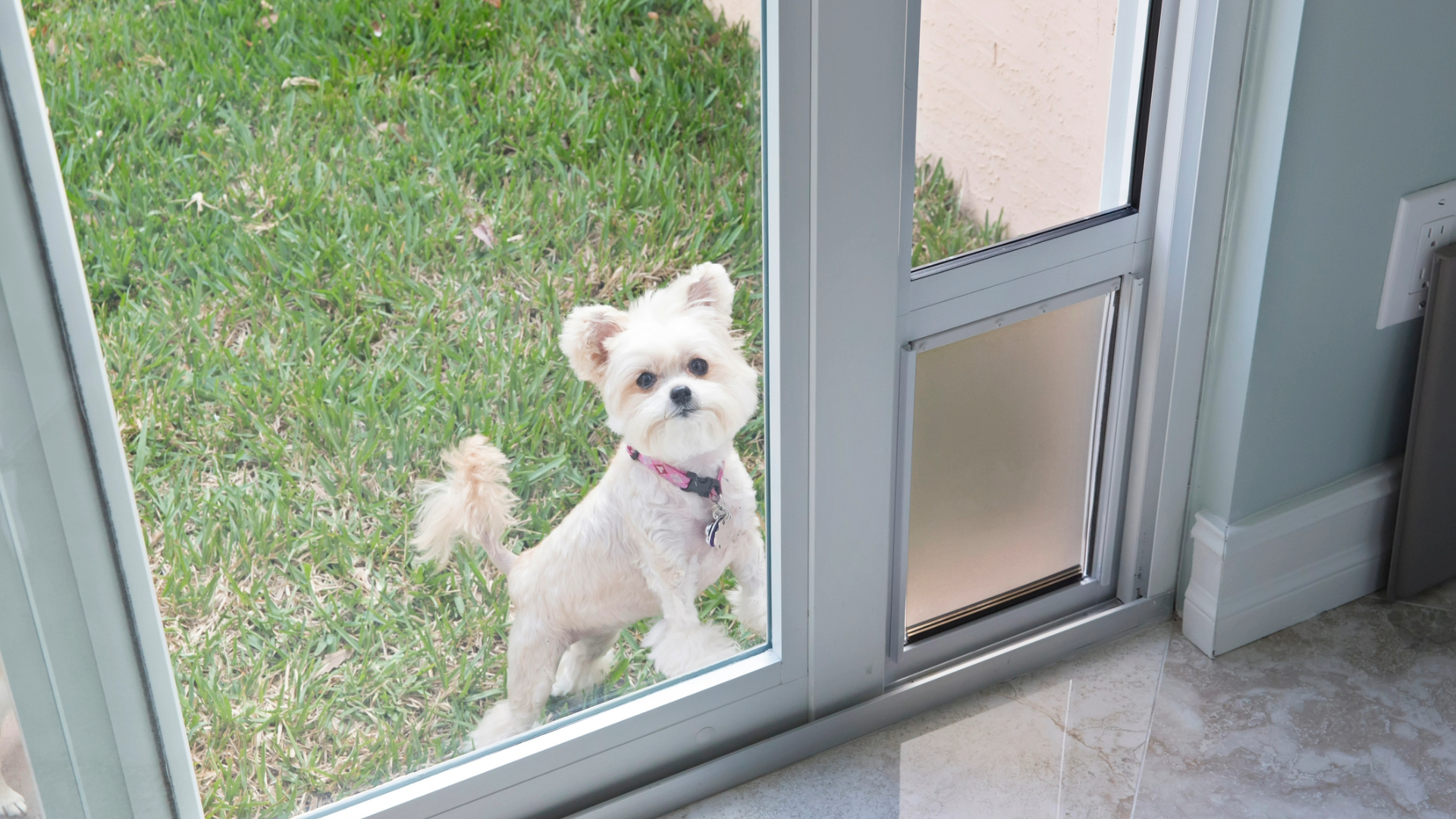
3. Door latch
A nice, simple solution that works well when you’re at home a lot is a door latch. Prop the door open to the right size for your pet to pass through as they please. While this won’t work when you’re out of the house as it becomes a security risk, it is an easy way to keep your home warm and still fully accessible to your pet without leaving all the doors open. They’re also great for preventing babies from pulling doors closed on themselves.
Door Buddy Pet Door Latch for Cats
The best thing about Door Buddy? No tools are required. Simply stick it to your door and let your cat roam free. This budget-friendly gadget works on any interior door and can be adjusted to whatever width you need.
4. Window latch
A more practical option for the security-conscious, you latch an upper-story window (that your cat can reach) open. This allows your cat the freedom they desire, without compromising the safety of your home. While these latches prop the window open, they also prevent it from being opened any further, so there’s no need to worry about coming back to a cold house.
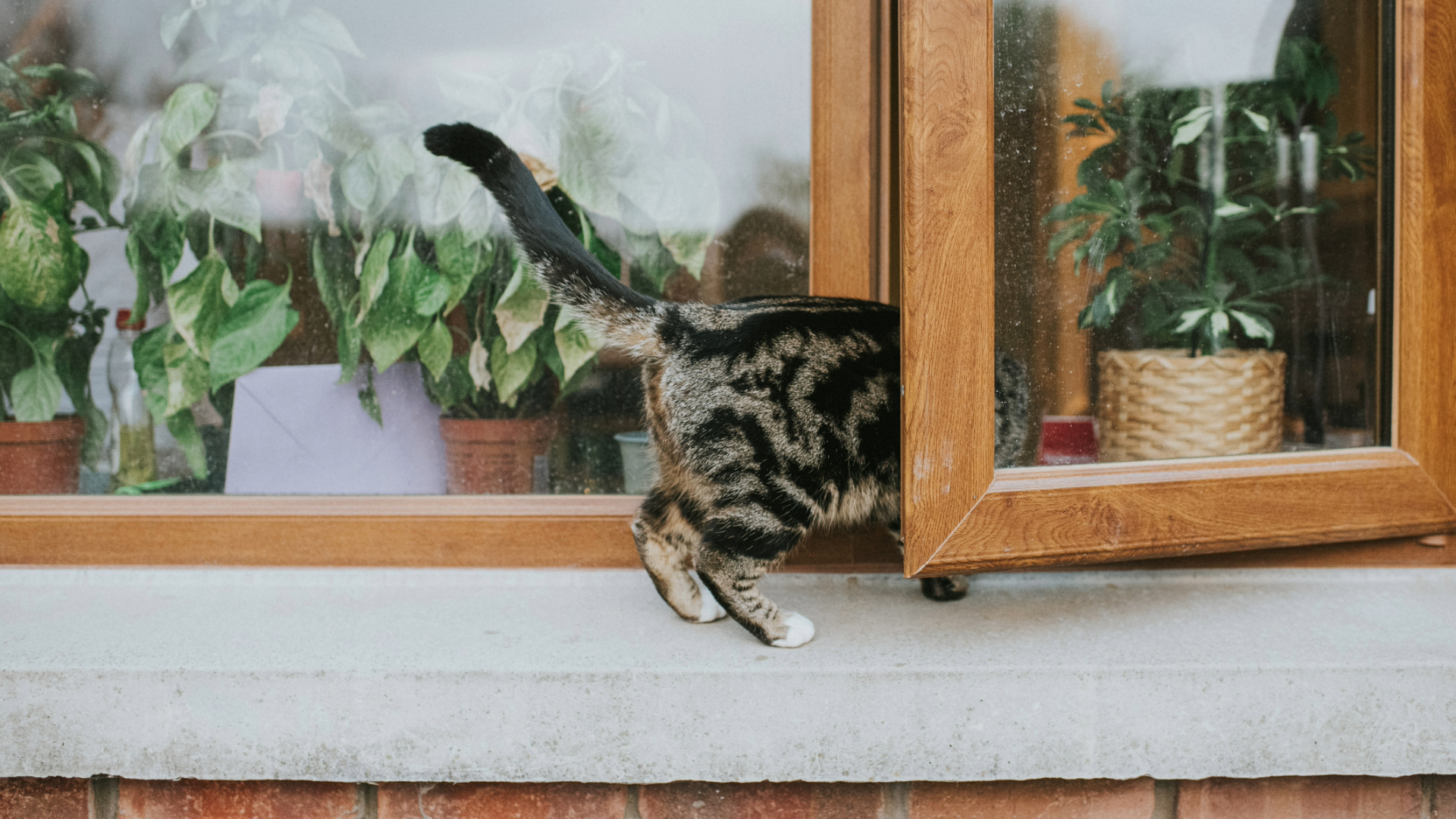
5. Consider having an indoor cat
Sometimes the obvious answer is to get yourself an indoor cat. If you’re wondering, the main difference between indoor vs outdoor cats is that outdoor cats have access to the outside, while indoor cats are limited to the home. Some cats self-impose this restriction on themselves and have no interest in going outside, while others might need a little more persuasion to stay in.
There are pros and cons for you and your cat if they are indoors all the time, but for cats with allergies and health issues, a life indoors is often the only option.
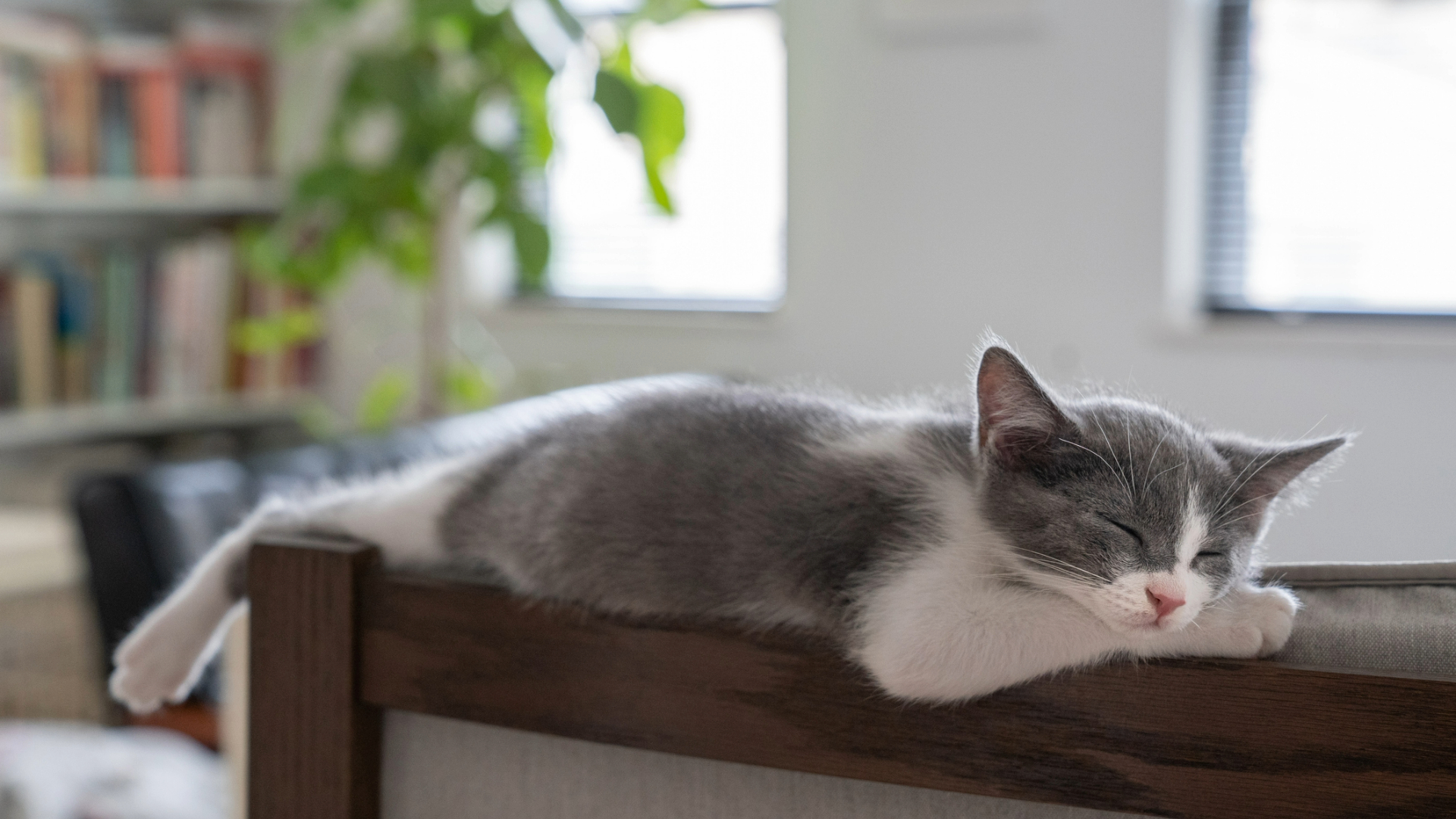
Want to find out how to install a pet door? Check out our step-by-step guide. You may find yourself wondering how to entertain indoor cats and keep them stimulated, but with the right toys, company, and activities, an indoor cat can live very happily. There are also several outdoor cat care pros and consthat you may find yourself puzzling over, and having an indoor cat removes this aspect from consideration.
PetSafe Sliding 81-in Glass Pet Door
This affordable sliding-door panel pet door comes in bronze or white and when installed, you’re unlikely to notice it’s even there as it’s mostly transparent. It comes in a variety of sizes, and although this may seem a pricey option when compared to the price of a regular in-door cat flap, you don’t have to worry about slicing up a door in your home to install it.

Lou is an experienced writer and keen dog lover who works at PetRadar's sister sites, LiveScience, Fit And Well and Coach. When Lou isn't covering health and fitness, she's busy spending time with her rescue lurcher, Dixie, horse riding or growing all kinds of veggies and flowers on her allotment.
Lou grew up with dogs and got her first dog in 2023 after many months of searching. Dixie is a six-year-old brindle greyhound lurcher (with lots of saluki mixed into her DNA too). Dixie was very uncertain and nervous when she first came home with Lou, who is her third owner, but after lots of time and care, she is now a happy, confident dog (with lots of canine and human friends!)
